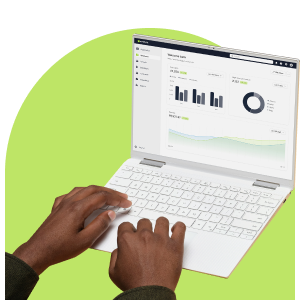First impressions matter. This is why you want to ensure your approach to onboarding new customers and employees is streamlined and enticing. This can seem daunting – or even impossible – but it doesn’t need to be. In this blog post, we give you a guide to using marketing automation workflows to create seamless onboarding journeys.
The Importance of Onboarding
Before we get into the details, let’s clarify what onboarding communication is. It entails familiarising or orienting a third party with your company. One type of onboarding is for new customers who have bought or agreed to buy your product(s) and/or service(s) or to sign up for an event; another type is for new employees.
In both cases, onboarding is an important process that gives your customer or employee information about your business, offerings, and expectations, and – when done well – can build trust by making them feel valued right from the start of your relationship. Onboarding, therefore, lays the foundation for customer and employee retention.
As this Forbes article suggests, the way you conduct your onboarding can signal to your new prospect whether they’ve made the right decision to – in the case of a new customer – agree to buy your product(s) and/or service(s), and – in the case of a new employee – work for you.
However, effective onboarding isn’t simple. It can be challenging and time-consuming for businesses to ensure new customers and employees who meet the same conditions or fall within the same parameters are onboarded in the same, personalised way.
Before you can send strategic and purposeful messages, you need to know information about the customer or employee with whom you are communicating.
Get to Know Your Audience
The more you know about each customer and employee, the more personalised you can make your communication – even when you’re sending automated bulk messaging.
It’s likely you already collect basic employee data, and you should do the same for your customers.
The best way to do this is through a subscription form. This will help you collect customer contact data like:
- Name
- Email address
- Cell phone number
- Gender
- Age
- Location
- Birthday
- Feedback
- Event registration
- Request a demo
You can read more about the best practices for building your subscription forms in this blog post, but some top tips are to:
- Keep the design of your subscription form in line with your webpage design.
- Ask for necessary information only.
- Assure customers their information will be protected (read more about the Protection of Personal Information Act here).
- Thank them for subscribing.
Once you have collected data about your customers and employees, you’re ready to start sending them informative and engaging onboarding communication.
How to Streamline Onboarding Communication
The most hassle-free way to send onboarding communication is through marketing automation workflows. If this term has you perplexed, don’t panic. You’ll be hooked once you understand how these workflows will help simplify your communication to ensure all new customers and employees receive the same, personalised messaging.
Note, you will need to use a platform, like Everlytic, on which you can build workflows for bulk communication.
Marketing automation workflows give you the ability to automatically send messages at specific times, with strategic delays, and based on certain conditions. In a nutshell, they are customisable automated communication journeys.
This is where your employee and customer contact data comes in, as you can adapt your onboarding messaging according to certain conditions. For example, you can set up an automated workflow so a particular email is sent to female customers in a certain location only.
You can also send certain messages based on whether customers or employees have engaged with a previous message. For example, if a customer has opened your first welcome email, you can send them a second email to explain a bit more about your products and/or services. However, if a customer has not engaged with your first email within three days of sending it, you can set up a workflow to trigger a follow-up email to be sent to remind them.
You can use marketing automation workflows for more than onboarding new customers and employees. In this blog piece, we explore five essential steps to help you create journeys that align with your lead nurturing expectations.
A Guide for Setting Up a Workflow
Platforms will vary on how to set up a marketing automation workflow, but we’re giving you an example of how you can set up an onboarding workflow on Everlytic in a bid to help you further understand what a workflow is, how it works, and how easy it is to set up when you have the right software.
Everlytic uses a five-step process to create a workflow, which entails:
Step 1: Entering the basic properties of the person from whom the email will be sent.
Step 2: Creating the workflow, including the messaging and triggers.
Step 3: Selecting the list to which you would apply the workflow.
Step 4: Choosing when to send the messages.
Step 5: Confirming the details.
As there are different types of workflows, we’ll elaborate on building a workflow for onboarding newcomers who have registered for an event.
First, you’d select a workflow type for a subscription event. This would trigger a contact to start receiving messages from the moment they are subscribed to your mailing list (either through a subscription form or when manually loaded).
An example of how this would work is a new customer would fill out their details on your subscription form to register for an event. This would trigger an email thanking them for their interest, providing further details about the event, and telling them what they can expect.
After three days, another email would be sent with the timetable and extra event info. You can set a condition so that if this email is not opened within three days, a second reminder email would be sent. You can then trigger an SMS to send the day before the event to remind your customers of the location and time.
Want to see a workflow in action? In this case study, we share how one business set up an email and SMS training journey for new employees that could be actively tracked and reported on.
Pros of Marketing Automation Workflows
Once you’ve set up the parameters and triggers of your marketing automation workflows for onboarding, the relevant messages will be sent to your new customers and employees at the relevant times – without you having to lift a finger.
The result is you save time from having to send out your communication manually. Using these workflows also streamlines your communication – so your new customers and employees who meet the same conditions or fall within the same parameters receive the same messages.
It also lessens the risk of error, like forgetting to send messages and missing an opportunity to show your customers and employees you care.
The advantage of personalising these automated messages is your customers and employees will feel valued, which will make them trust you and should keep them engaged. The higher the engagement of your marketing mailers, the more likely you are to build lasting relationships.
The more you know about how your recipients engage with your content, the more powerful you can make your communication. Learn more about three types of metrics you need to measure the performance of your bulk email campaigns quickly and effectively.
Take the Hassle Out of Onboarding
Onboarding new customers and employees is an important process, but it doesn’t have to be taxing. Marketing automation workflows streamline your communication by allowing you to set up personalised and thorough messages that will be automatically triggered to send at relevant times, depending on where your new customer or employee is in their onboarding journey. This lessens the margin for error and frees up time to focus on other aspects of your business.
Automate Your Onboarding Communication Today
Building solid relationships with new customers and employees is vital for your business, and it begins with effective onboarding processes. These can be challenging to get right, but marketing automation workflows make them easier. Don’t just take our word, though, see them in action for yourself.



